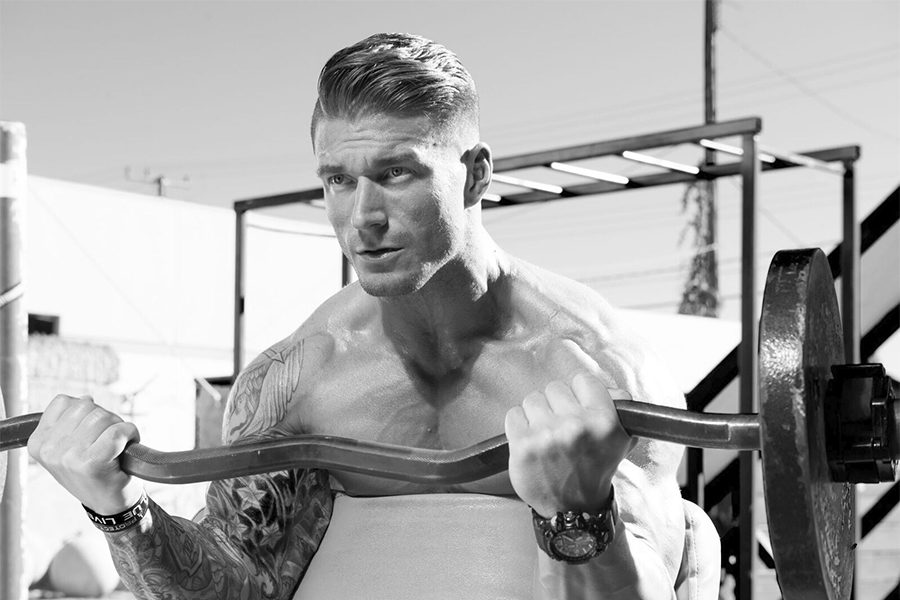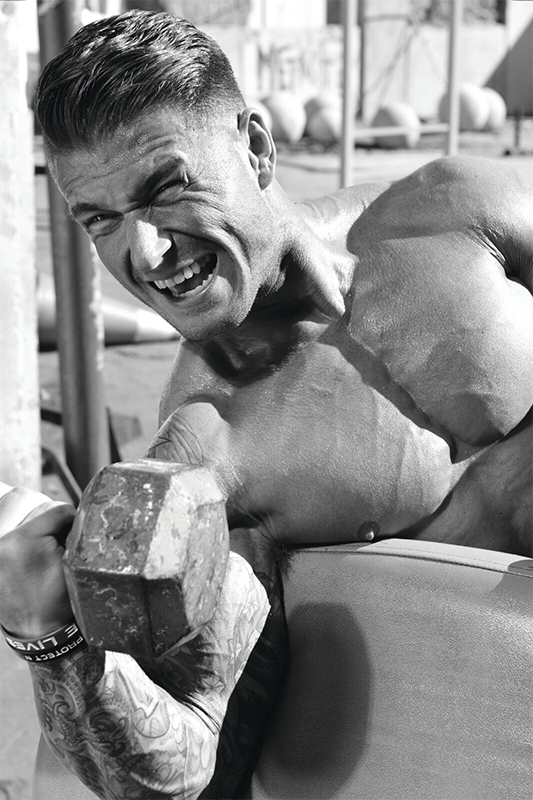

Improve your form, keep your body balanced and continue progressing.
By Heather Neff, CPT
Have you tried pre-exhaust training? Though it’s not a new method, pre-exhaust training is gaining in popularity, and for good reasons. Whether you are trying to gain in muscle size, strength or even increase your endurance, pre-exhaust training is something that’s sure to help. If you’re like most people, you go to the gym to improve yourself in more ways than one way. You train hard, count reps, complete your sets, regularly add weight to the bar and are always striving for progress. After all, that’s what successful training is all about.
With pre-exhaust training, progression is a main factor. It not only helps you move towards your goals, pre-exhaust training also ensures your muscles stay in balance, your form improves and you are always keeping it challenging. As we all know, challenge makes change.
The Concept
With pre-exhaust training, you perform an isolation exercise for a high number of reps before switching to a compound movement for the same muscle group. For instance, you would complete two or three sets of 12 to 15 reps of dumbbell concentration curls and then begin performing standing barbell curls.
It seems to be the exact opposite of what you’ve always been told to do: Heavy compound lifts before isolation exercises. With this pre-exhaust method, you’ll be fatiguing the main muscles before moving on to your compound movement that incorporates other muscles. The target muscle will already be worked enough before the other muscles give out first. Why the change? This will most definitely promote muscle growth, more strength and better endurance.
It’s like doing a sit-up compared to a crunch. You can blast out all the crunches you want in order to directly target the rectus abdominis, but once you switch to a sit-up, your hip flexors usually give in before your abs are burning. So the point is to rep out with the isolations, then switch to the compound movements.
The Benefits
One of the many great benefits of pre-exhaust training is that you’ll have less of a likelihood of ending up with muscle imbalances as you progress in your program. If you’ve noticed that a certain part of your body seems to be falling behind in gains or is underdeveloped, that’s where pre-exhaust training could help you catch up to yourself. How so? By fatiguing a muscle before you move on to the compound movements that particular muscle will also be involved in, you’ll be ensuring that it doesn’t get left behind.
Another reason pre-exhaust training is beneficial is that it truly prepares the muscles for the work ahead. It does so by warming them up, making them more pliable and improving your form and range of motion.
But, that’s not all! It could be argued that perhaps the most important muscle in your body (your brain) will also gain some advantages through pre-exhaust training. Getting the isolation exercises out of the way first will get you pumped up and ready for the big lifts and allow you to put more focus into those exercises.

Pre-Exhaust Isolations And Compound Pairings
Not sure which exercises to pair together to work on a specific muscle? We’ve got you covered! This list will provide you with some examples to get you started.
When it comes to the isolation exercises (pre-exhausting), be sure you’re doing enough to feel it. You’ll want to do at least two or three sets of 12 to 15 reps or more depending on the amount of weight you’re working with. Take a minute to rest and then move on to the compound moves to finish your workout.
Quads
Isolation: Leg Extension
Isolation: Leg Curl
Compound: Leg Press
Compound: Squat
Biceps
Isolation: Concentration Curl
Isolation: Preacher Curl
Compound: Barbell Curl
Compound: Standing Dumbbell Curl
Shoulders
Isolation: Lateral Raise
Isolation: Machine Lateral Raise
Compound: Barbell Shoulder Press
Compound: Cable Upright Row
Back
Isolation: Barbell Pullover
Isolation: Straight Bar Pulldown
Compound: Wide, Narrow or Reverse Grip Pull-Up
Compound: Deadlift
Hamstrings
Isolation: Hamstring Machine Curl
Isolation: Lying Leg Curl (Stability Ball)
Compound: Walking Lunge
Compound: Step-Up
Triceps
Isolation: Seated Triceps Extension
Isolation: Triceps Kickback
Compound: Diamond Push-Up
Compound: Triceps Dip
Calves
Isolation: Single Leg Calf Raise
Isolation: Seated Calf Raise
Compound: Jump Squat
Compound: Walking Lunge
Abs
Isolation: Crunch
Isolation: Lying Leg Raise
Compound: Plank with Row
Compound: Loaded Russian Twist
Afterwards, be sure you get in a good cool down and stretch. Your muscles are going to need it!






















You must be logged in to post a comment Login